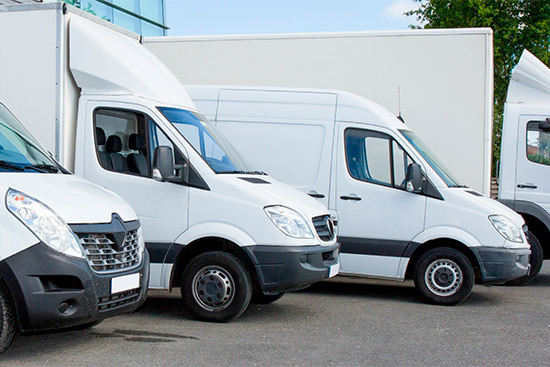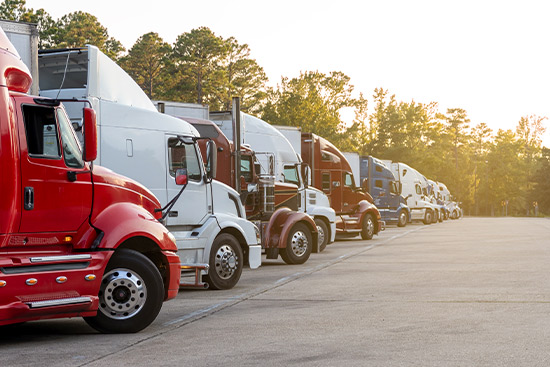10/07/2025
Running a transportation company in Laredo, Texas, comes with unique opportunities and challenges. The city is the busiest inland port in the United States, handling more than $339 billion in trade annually. This makes Laredo a hub for trucking, freight, and logistics operations. Companies here must manage vehicles and drivers while navigating cross-border traffic, strict compliance requirements, and high operational risks.
Protecting a fleet is essential for long-term stability. Fleet insurance provides a single, comprehensive way to cover multiple vehicles, simplify policy management, and safeguard business operations from unexpected losses.
What Is Fleet Insurance?
Fleet insurance is a policy that covers multiple vehicles under one plan. Instead of managing individual contracts for every truck, van, or car, a business can use one policy with one renewal date and payment.
Industries that benefit include long-haul trucking, delivery services, construction, and passenger transport. Fleet coverage is not only more convenient but can also reduce per-vehicle premiums compared to separate auto policies.
How Many Vehicles Do You Need for Fleet Insurance?

Most insurers define a fleet as two or more vehicles. Even small businesses with only a few vans may qualify.
This flexibility allows coverage to grow alongside operations. Larger fleets may secure lower per-vehicle costs and stronger liability protections.
Types of Fleet Insurance Coverage
Fleet insurance can be tailored to match the risks of each operation.
Liability Coverage
Covers bodily injury and property damage if a driver causes an accident. While Texas requires liability coverage, most transportation companies carry higher limits to protect against lawsuits and major claims.
Physical Damage Coverage
Protects vehicles against collision, theft, vandalism, and natural disasters. For businesses with high-value trucks or specialized equipment, this protection is critical.
Cargo Insurance
Especially important in Laredo’s freight market, cargo insurance covers goods against loss, theft, or damage in transit. Many contracts require it.
Uninsured/Underinsured Motorist Protection
Protects if a company vehicle is hit by a driver with insufficient coverage.
Medical Payments and Personal Injury Protection
Covers medical expenses for drivers or passengers after an accident, adding an extra layer of financial security.
Specialized Add-Ons
Coverage can be extended with options like roadside assistance, towing, or rental reimbursement to keep operations running when vehicles are out of service.
For trucking businesses, specialized trucking insurance may also be required to comply with Federal Motor Carrier Safety Administration (FMCSA) rules.
How Much Is Fleet Insurance?

Premiums depend on several factors.
Fleet Size
Larger fleets often benefit from better per-vehicle pricing, although overall costs rise with each unit added.
Vehicle Type and Value
Semi-trucks and specialty vehicles typically cost more to insure than small vans or passenger cars. Vehicle age and replacement value also play a role.
Driver Safety Records
Insurers evaluate employee driving histories. Fleets with safe drivers pay less, while companies with frequent accidents face higher premiums.
Coverage Levels
Higher policy limits provide stronger protection but increase costs. A lower deductible reduces out-of-pocket expenses after a claim but raises premiums.
Geographic Reach
Fleets that stay local often pay less. Long-haul and cross-border operations involve greater risks and therefore higher premiums.
On average, companies spend about $1,200 per vehicle annually for fleet coverage. Rising insurance costs are a growing burden for fleet operators nationwide.
Evaluating Coverage Needs
The right coverage depends on each company’s unique risks.
Nature of Operations
Businesses hauling hazardous materials or high-value goods face different exposures than local delivery services. Coverage must reflect those risks.
Fleet Size and Structure
Smaller fleets may need only standard liability and physical damage, while larger operations often require umbrella or layered policies.
Employee Safety Practices
Companies that invest in driver training and monitoring can reduce accidents and lower premiums. Telematics devices are another way to prove safe driving behavior to insurers.
Cross-Border Operations
For fleets traveling into Mexico, endorsements or separate Mexican liability policies are required. These needs are unique to border cities like Laredo.
Growth Plans
Policies should expand as operations scale, protecting new vehicles without requiring major policy overhauls.
Cross-Border Considerations for Laredo Fleets

Laredo’s role as the gateway to Mexico creates unique coverage needs.
Mexican Liability Requirements: U.S. coverage typically ends at the border. Businesses need Mexican liability insurance or endorsements.
Cargo Risks: Cross-border shipping often requires higher limits due to increased risk.
Compliance: Companies must meet both U.S. FMCSA regulations and Mexican transportation laws.
Risk Exposure: Border traffic, theft, and delays are part of daily operations and influence premiums.
Working with a local agency experienced in cross-border insurance is key to staying protected on both sides of the border.
Why Fleet Insurance Matters in the RGV and McAllen
Fleet operations across the Rio Grande Valley face many of the same challenges as those in Laredo. Businesses in McAllen, Brownsville, Harlingen, and Edinburg rely on fleets for shipping, delivery, and passenger transport.
SafeGuard Insurance Agency has 40+ agents across South Texas who live and work in these communities. That local presence means we understand regional risks and how to protect the businesses that power the Valley economy.
FAQs About Fleet Insurance
What is fleet insurance?
A policy that covers multiple vehicles under one plan, simplifying management and often reducing costs.
How many vehicles qualify for fleet insurance?
Most insurers require only two vehicles.
How much does fleet insurance cost?
Premiums typically range from a few hundred to several thousand dollars per vehicle annually, depending on risk profile.
Does fleet insurance cover Mexico?
No. Separate Mexican liability coverage or endorsements are required.
Whether operating a small courier in McAllen or a large trucking company in Laredo, fleet insurance is essential for risk management. It consolidates policies, protects vehicles and cargo, and helps businesses keep moving forward.
SafeGuard Insurance Agency combines broad expertise with a local South Texas perspective. With 40+ agents across the RGV, we’re here to help transportation companies secure the right fleet coverage, including cross-border operations.
Ready to protect your fleet? Talk to a SafeGuard agent today.






